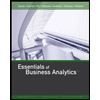
Concept explainers
During the last few years, Jana Industries has been too constrained by the high cost of capital to make many capital investments. Recently, though, capital costs have been declining, and the company has decided to look seriously at a major expansion program proposed by the marketing department. Assume that you are an assistant to Leigh Jones, the financial vice president. Your first task is to estimate Jana’s cost of capital. Jones has provided you with the following data, which she believes may be relevant to your task:
- a. The firm’s tax rate is 40%.
- b. The current price of Jana’s 12% coupon, semiannual payment, noncallable bonds with 15 years remaining to maturity is $1,153.72. Jana does not use short-term interest-bearing debt on a permanent basis. New bonds would be privately placed with no flotation cost.
- c. The current price of the firm’s 10%, $100 par value, quarterly dividend, perpetual
preferred stock is $116.95. Jana would incur flotation costs equal to 5% of the proceeds on a new issue. - d. Jana’s common stock is currently selling at $50 per share. Its last dividend (D0) was $3.12, and dividends are expected to grow at a constant rate of 5.8% in the foreseeable future. Jana’s beta is 1.2, the yield on T-bonds is 5.6%, and the market risk premium is estimated to be 6%. For the own-bond-yield-plus-judgmental-risk-premium approach, the firm uses a 3.2% risk premium.
- e. Jana’s target capital structure is 30% long-term debt, 10% preferred stock, and 60% common equity.
To help you structure the task, Leigh Jones has asked you to answer the following questions:
- a. (1) What sources of capital should be included when you estimate Jana’s weighted average cost of capital?
(2) Should the component costs be figured on a before-tax or an after-tax basis?
(3) Should the costs be historical (embedded) costs or new (marginal) costs?
Want to see the full answer?
Check out a sample textbook solution
Chapter 11 Solutions
INTERMEDIATE FINAN.MGMT.(LL)-W/MINDTAP
- I need help ! What does “liquidity” refer to in finance? a) The profitability of a companyb) The ease of converting assets into cashc) The stability of incomed) The level of debtarrow_forwardWhat does “liquidity” refer to in finance? a) The profitability of a companyb) The ease of converting assets into cashc) The stability of incomed) The level of debtarrow_forwardWhich of the following is considered a long-term source of finance for a business? A) Trade credit B) Short-term bank loan C) Issue of shares D) Overdraftarrow_forward
- What is the primary purpose of financial management? a) Maximizing profitsb) Minimizing expensesc) Maximizing shareholder wealthd) Ensuring employee satisfactionarrow_forwardI need help!! 2. Which of the following is a short-term source of finance? a) Bondsb) Equity sharesc) Trade creditd) Debenturesarrow_forwardNo Chatgpt 2. Which of the following is a short-term source of finance? a) Bondsb) Equity sharesc) Trade creditd) Debenturesarrow_forward
- 2. Which of the following is a short-term source of finance? a) Bondsb) Equity sharesc) Trade creditd) Debenturesno aiarrow_forward2. Which of the following is a short-term source of finance? a) Bondsb) Equity sharesc) Trade creditd) Debenturesarrow_forwardWhich of the following best describes the concept of leverage in finance? A) Using borrowed funds to increase the potential return on investment B) Reducing risk by diversifying assets C) A method to avoid paying taxes D) Increasing the company’s profit margin no aiarrow_forward
- What does a ledger account represent? A) A detailed record of all business transactionsB) A summary of trial balancesC) An individual record for each accountD) The final balance of a financial statementarrow_forwardWhich of the following is a capital budgeting technique used to evaluate an investment project? A) Net Present Value (NPV) B) Return on Assets (ROA) C) Price-to-Earnings Ratio (P/E) D) Dividend Yield No aiarrow_forwardWhat does the term 'liquidity' refer to in finance? A) The ability to quickly convert an asset into cash B) The total value of a company’s assets C) The volatility of a market D) The difference between liabilities and assets no aiarrow_forward
 Intermediate Financial Management (MindTap Course...FinanceISBN:9781337395083Author:Eugene F. Brigham, Phillip R. DavesPublisher:Cengage Learning
Intermediate Financial Management (MindTap Course...FinanceISBN:9781337395083Author:Eugene F. Brigham, Phillip R. DavesPublisher:Cengage Learning Essentials of Business Analytics (MindTap Course ...StatisticsISBN:9781305627734Author:Jeffrey D. Camm, James J. Cochran, Michael J. Fry, Jeffrey W. Ohlmann, David R. AndersonPublisher:Cengage Learning
Essentials of Business Analytics (MindTap Course ...StatisticsISBN:9781305627734Author:Jeffrey D. Camm, James J. Cochran, Michael J. Fry, Jeffrey W. Ohlmann, David R. AndersonPublisher:Cengage Learning

